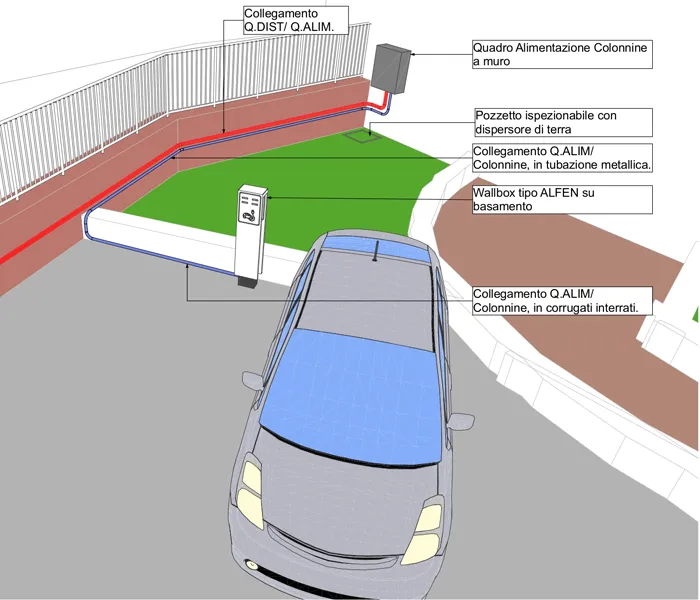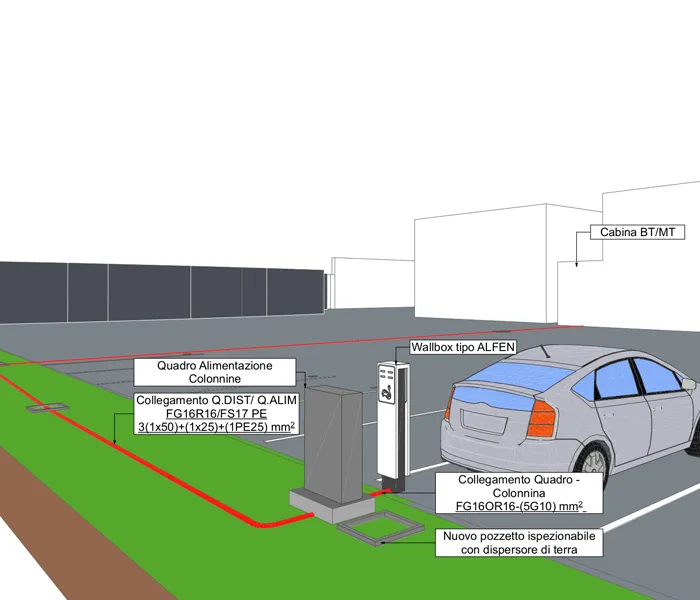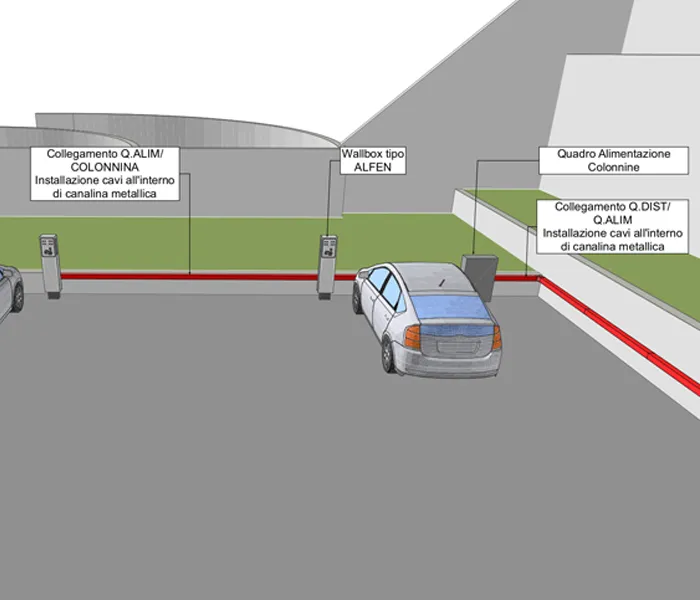The project: design electrical system for electric vehicle
The purpose of this project is to describe the system solutions for the design and construction ex-novo of electrical systems serving electric vehicle charging stations, along with their related services.
What is a charging station?
A charging station is a device for distributing electrical energy through which electric cars and hybrid vehicles can be recharged.
The general standard regulating the charging of electric vehicles classifies the modes of connection to the power supply network into four different charging methods:
- “Mode 1” charging involves directly connecting the electric vehicle to standard 230/400 V power outlets up to 16 A.
- “Mode 2” charging requires connecting the vehicle to 230/400 V power outlets up to 32 A. This mode involves the use of a control unit that interfaces between the vehicle and the electrical network. It is a portable system that does not require the use of fixed structures.
- “Mode 3” charging involves connecting the vehicle to specific alternating current 230/400 V power outlets or connectors for electric vehicle charging, equipped with control units and protection systems.
- “Mode 4” charging is rapid or ultra-rapid charging, which is the only mode that involves the use of direct current and an external charger.

Technical aspects of charging station design
For the design and projects under study, concerning fixed charging stations located in external parking areas, Mode 3 charging with “Type 2” connectors has been envisaged.
The distribution boards and protection panels for secondary distribution networks are of a prefabricated modular type, consisting of metal or plastic structures depending on the installation type. Inside these boards, the installation of automatic switches with magnetic thermal protection and differential function is planned, as required by CEI 68/7 Standard sec. 722.
The cables envisaged are single-core or multi-core, laid inside buried pipes, galvanized steel channels with covers, or in pipes made of thermoplastic material, depending on the installation type.
The cable distribution lines are made with cables with double insulation that do not propagate fire, emit reduced amounts of corrosive gases, and are labeled as FG16OR16 0.6/1kV.
The cables are sized to maintain a maximum voltage drop of less than 4%, as prescribed by CEI 64-8 Standard.
The charging station must be equipped with an emergency disconnection device, located in a marked position and accessible even to rescue operators. Furthermore, it must determine the disconnection of the electrical system starting from the power sources.
A disconnect button for de-energizing the entire area must be positioned externally, before access or in the immediate vicinity, in an easily accessible position and identified with appropriate signs.



